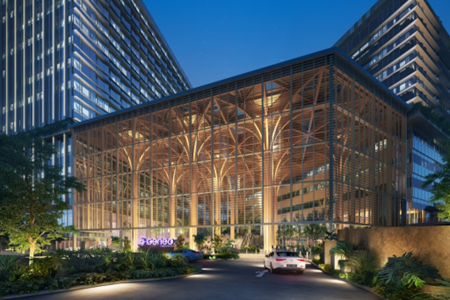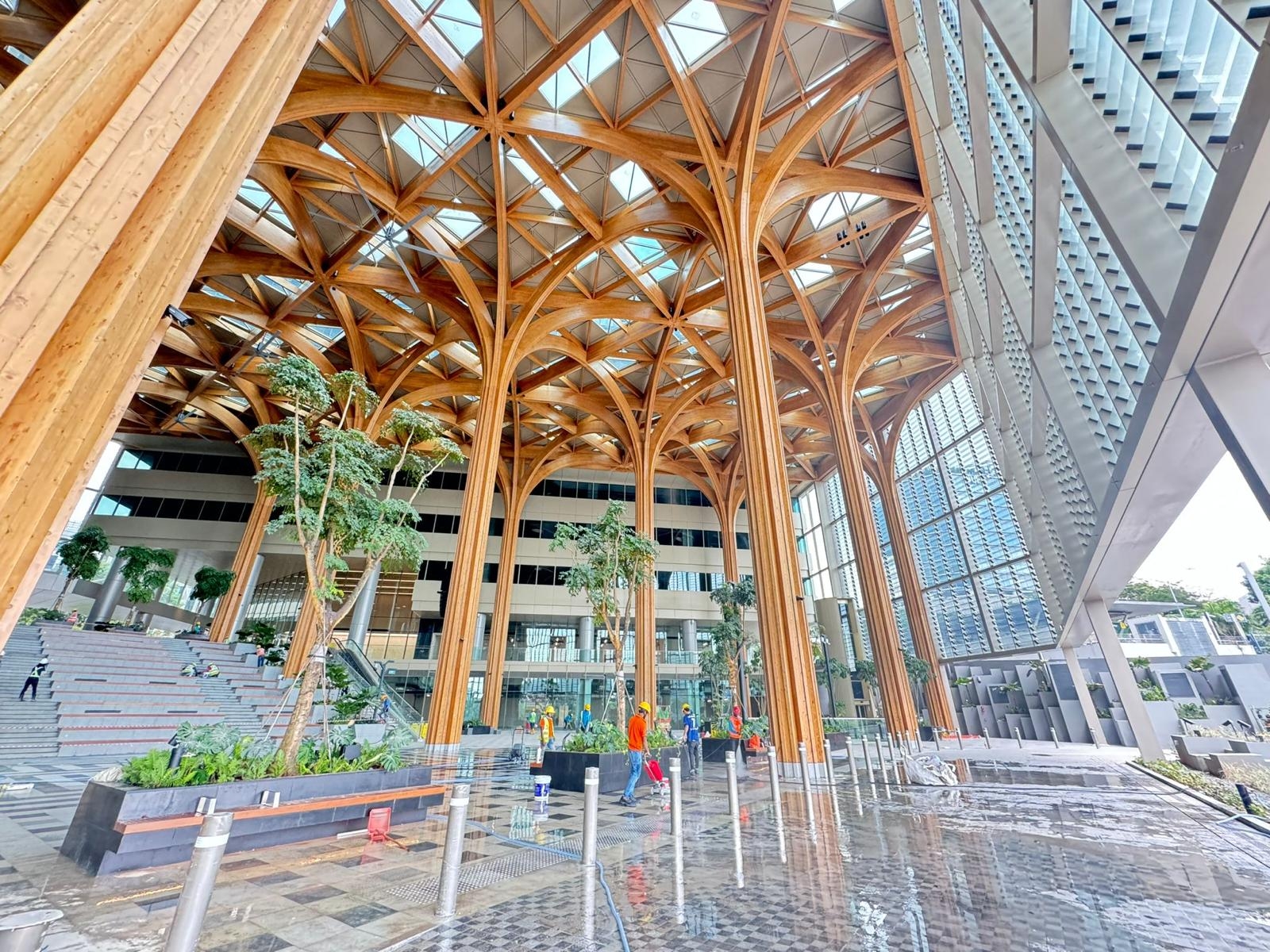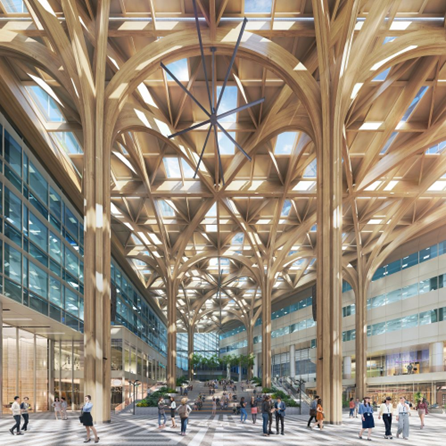Sprint Canopy: PEFC timber, low carbon, high impact
Reaching 27m high and sat between two skyscrapers, Sprint Canopy is Southeast Asia’s tallest single-span timber structure. It uses 1,150 m3 of PEFC-certified spruce and spans a 3,000 m2 public plaza that connects five buildings.
Sprint Canopy: PEFC timber, low carbon, high impact
28 July 2025 Sustainable construction
Reaching 27m high and sat between two skyscrapers, the SGD 5.5 million Sprint Canopy is Southeast Asia’s tallest single-span timber structure and sits on CapitaLand’s $1.4 billion Geneo science park cluster development in Singapore.

Containing 780 different components, and 80 tonnes of custom-designed S355 steel connectors, it uses 1,150 m3 of PEFC-certified spruce and spans a 3,000 m2 public plaza that connects five buildings – acting as a functional but striking architectural landmark.
The 1,150 m3 of spruce glulam, was fabricated and supplied by Versowood Oy. The architectural design references the fan vaulted ceilings of gothic architecture and European cathedrals.
The huge columns could not be split into two parts and the arches were too wide for a standard 40ft shipping container, so the elements (some 19 m long) were manufactured offsite and shipped over a six-week journey to Singapore flat-packed, and pre-assembled in a warehouse 20 km from the site before final installation.

Italian timber engineering specialists Ergodomus conducted advanced ‘Finite Element Method’ analysis to ensure structural stability under various loads, saying: “The toweringly high columns and the overall area covered by the structure make it one of the most ambitious projects we’ve ever undertaken.”
By collaborating closely with the builder, Ergodomus developed an ‘optimal assembly sequence’ to design temporary bracing systems and account for different loads.
On top of the timber structure is a glass roof to protect the plaza below. Drainage was a core design challenge. To deal with the regular heavy rain in Singapore, the canopy incorporates complex triangular geometry to manage water flow.

The timber canopy not only delivers on design and structural performance, it also significantly lowers embodied carbon emissions – by an estimated 88% compared to steel and 63% compared to concrete.
The use of PEFC-certified timber ensures full traceability throughout the supply chain. Verified by DoubleHelix, the canopy stores an impressive 952 tonnes of CO₂e in biogenic carbon, while emissions from harvest to installation totalled just 67 tonnes CO₂e – a powerful statement in favour of low-carbon construction.
The structure ‘blends form and function’ and has been engineered to meet strict technical requirements to create an elegant and flowing timber structure. The glulam canopy is also being seen as a ‘significant learning milestone’ for Singapore’s construction industry as it looks to specify more mass timber for public developments.
Venturer Timberwork’s canopy at Geneo is a model of how mass timber structures can transparently measure, report, and optimise biogenic carbon flows, while embedding circularity – fully in sync with ISO 14064 and emerging green building frameworks.
Photo credits: Ergodomus